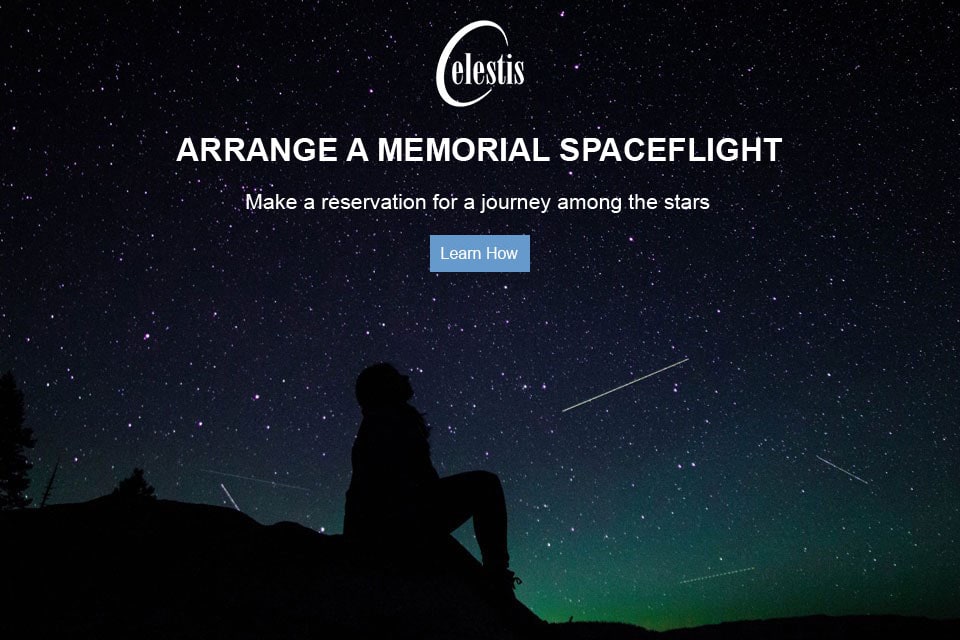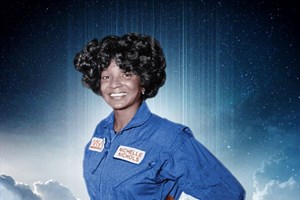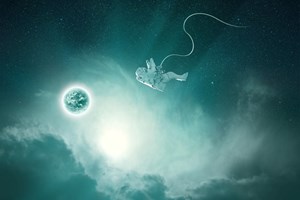Celestis Spotlight: Dr. Philip K. Chapman, Aurora and Enterprise Flight Participant
Share Celestis Spotlight: Dr. Philip K. Chapman, Aurora and Enterprise Flight Participant:
Post Authors
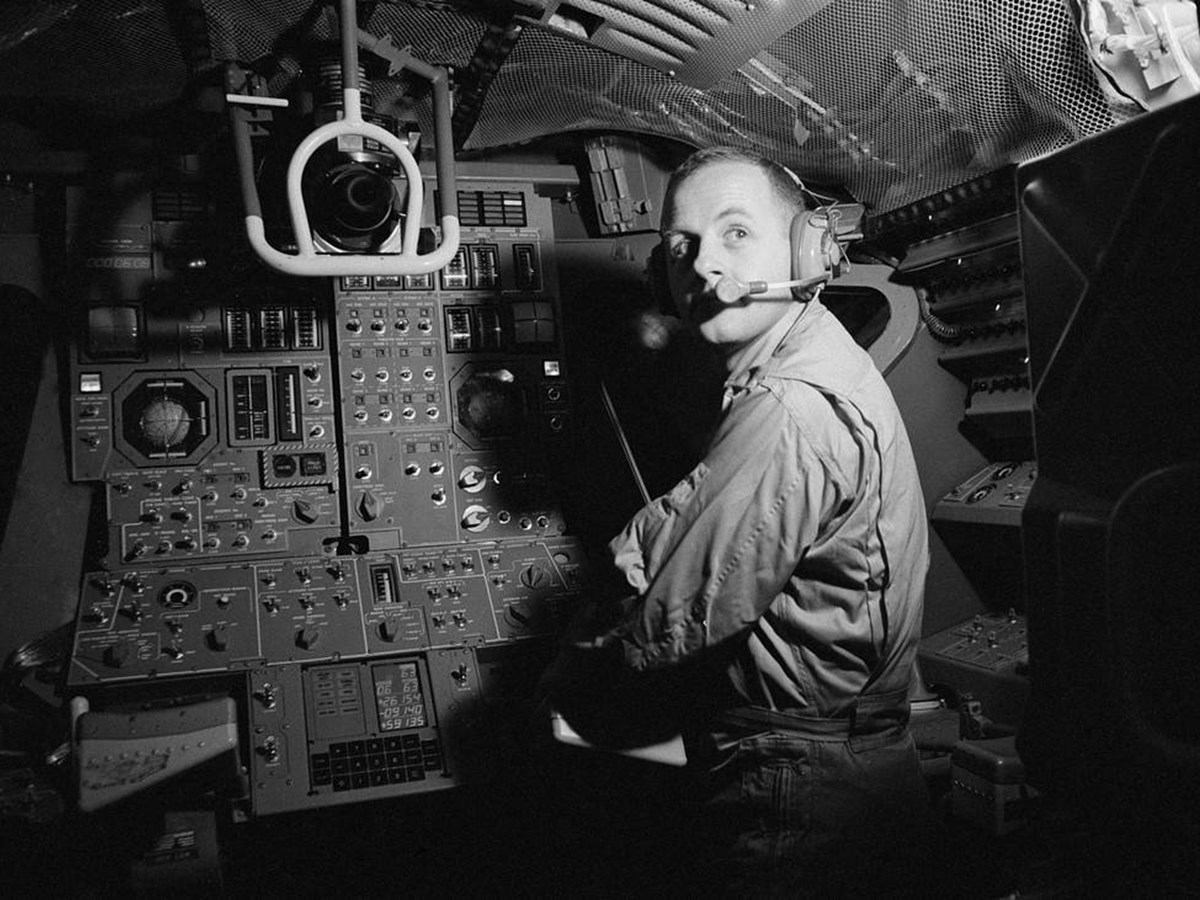
1968 NASA photo
By Emily Carney
If you asked a focus group to picture early Space Age-era astronauts, they’d usually think of all-American jet pilots such as John Glenn and Neil Armstrong, both household names. They probably wouldn’t conjure up images of pipe-smoking physicists, especially ones born outside of the U.S.
However, NASA’s sixth group of astronauts – its second group of scientist astronauts – boasted two members born outside of the United States. Dr. J. Anthony Llewellyn was born in Wales, and Dr. Philip Chapman was born in Melbourne, Australia. While Llewellyn resigned in 1968, soon after his selection, Chapman’s contributions to NASA were deeply felt as he supported 1971’s Apollo 14 as its mission scientist, devised one of the most straightforward yet clever experiments of the Apollo program, and influenced science policy within the agency. While he resigned from NASA in 1972 without flying in space, his influence on spaceflight remains very much alive.
In 2022, he will finally get his own space adventure. Chapman passed away in 2021, but his ashes will fly aboard two Celestis memorial spaceflights, the Aurora Flight and Enterprise Flight.
From Australia to Antarctica…to NASA
A self-described “space nut” from the age of 12, a National Space Society blog post described Chapman’s path that led to him becoming an astronaut: “Prior to his mid-1967 selection, Chapman, at 32, had already enjoyed a life worthy of a standalone doorstop biography, having been a pilot in the Royal Australian Air Force Reserve,…an Antarctic explorer studying the continent’s aurorae at age 23, and having earned a post-graduate education through Massachusetts Institute of Technology.” In a 2020 interview, Chapman described his 1958 experiences as a last-minute addition to an ANARE (Australian National Antarctic Research Expeditions) expedition. He dryly remarked how his girlfriend of that period was not thrilled at the prospect of him leaving for over a year:
…I gave my boss ten minutes' notice and went to see my girlfriend…to tell her I would be back in 15 months. She was not pleased. Ten days later, I was on iceberg watch on the bridge of the MV Thala Dan in the monstrous seas of the Southern Ocean. I was 22 and had never been out of sight of land.
There were 29 of us at Mawson, all male. My job was to study the aurora australis. To that end, a two-man camp had been established the previous year at Taylor Glacier, 50 miles west of Mawson. The idea was to take stereo photos of the aurora (which is at an altitude of about 60 miles) using a camera mounted on a theodolite. I spent most of the winter there.
My companion was replaced about every two weeks, using one of two DH Beavers at Mawson. They landed on the sea-ice, usually about a mile from shore.
A principal attraction was that most of the nameless nunataks (rocky hills) nearby had never been climbed, and a first ascent got your name on it (mine is called Chapman Ridge).
In late 1958, James Van Allen’s instrument aboard Explorer I discovered the source of aurorae visible at Earth’s poles – high-energy particles emanating from the Van Allen radiation belts. Chapman later joked that he was one of the only scientists in the world unaware of what caused the aurora australis during that time, even though he had been sent to Antarctica expressly to study them.
Chapman’s wages from serving in Antarctica paid the fare to the US to be a staff physicist at MIT’s Experimental Astronomy Lab, where he worked on inertial guidance. Tuition discounts for staff members allowed him to earn a Master of Science in aeronautics and astronautics in 1964 and a Doctor of Science in 1967, focusing on instrumentation. The example and experience of two members of his lab (Buzz Aldrin and Rusty Schweickart) being accepted into NASA’s astronaut corps strengthened Chapman’s candidacy to be selected for the Apollo program. In August 1967, he became the first-ever Australian-American astronaut.
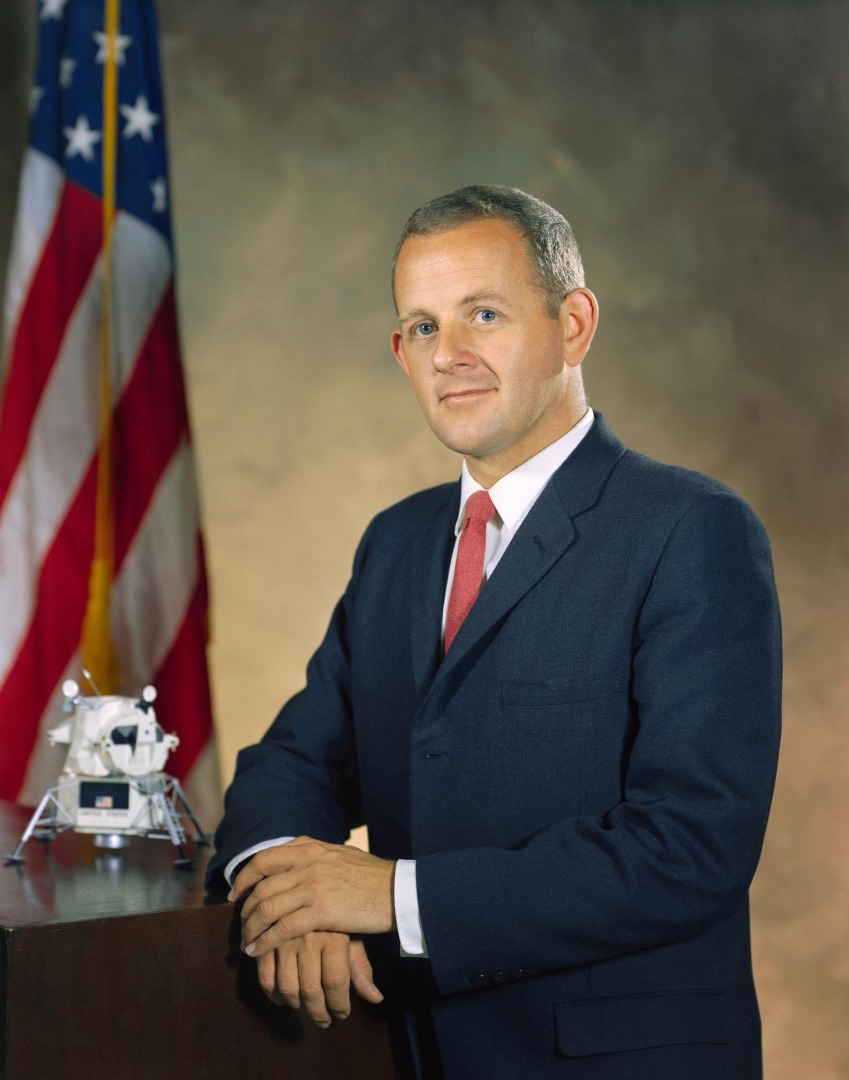
Dr. Philip Chapman's 1967 astronaut portrait. NASA photo
The Ups and Downs of Astronaut Life
Chapman relished flying NASA’s T-38 supersonic jets, having flown fabric-covered DH-82A Tiger Moth bi-planes as a pilot in the Royal Australian Air Force Reserve. Still, by 1969, he saw the proverbial “writing on the wall” shortly after Apollo 11 successfully landed on the Moon: most of the public had lost interest in the space program. Soon, missions and entire programs would be axed thanks to agency budget cuts. A recently rediscovered memo that Chapman wrote to his scientist-astronaut colleagues in 1970 underscored the dire situation:
I would indict NASA on at least the following counts:
1) Failure to spread understanding of the importance of the program. We have relied on spectaculars and the space race, both of which are ineffective now – everything is anticlimax after Apollo 11, and the Russians are (seemingly) out of the running. What we are doing will be remembered when Vietnam and even the whole communist-capitalist struggle are as dusty as the Peloponnesian Wars, but there is little public awareness of what a remarkable thing it is to be living now.
2) Failure to develop a coherent and imaginative plan for what we are trying to do in space in the ‘70s. Planning for new generations of vehicles is generally fairly well done, but there is no strong central authority accepting responsibility for what we will do once in orbit. The nation will clearly no longer accept getting into space as an end in itself and there will be no program unless we exhibit a total commitment to truly significant and cost-effective work in space in science and applications.
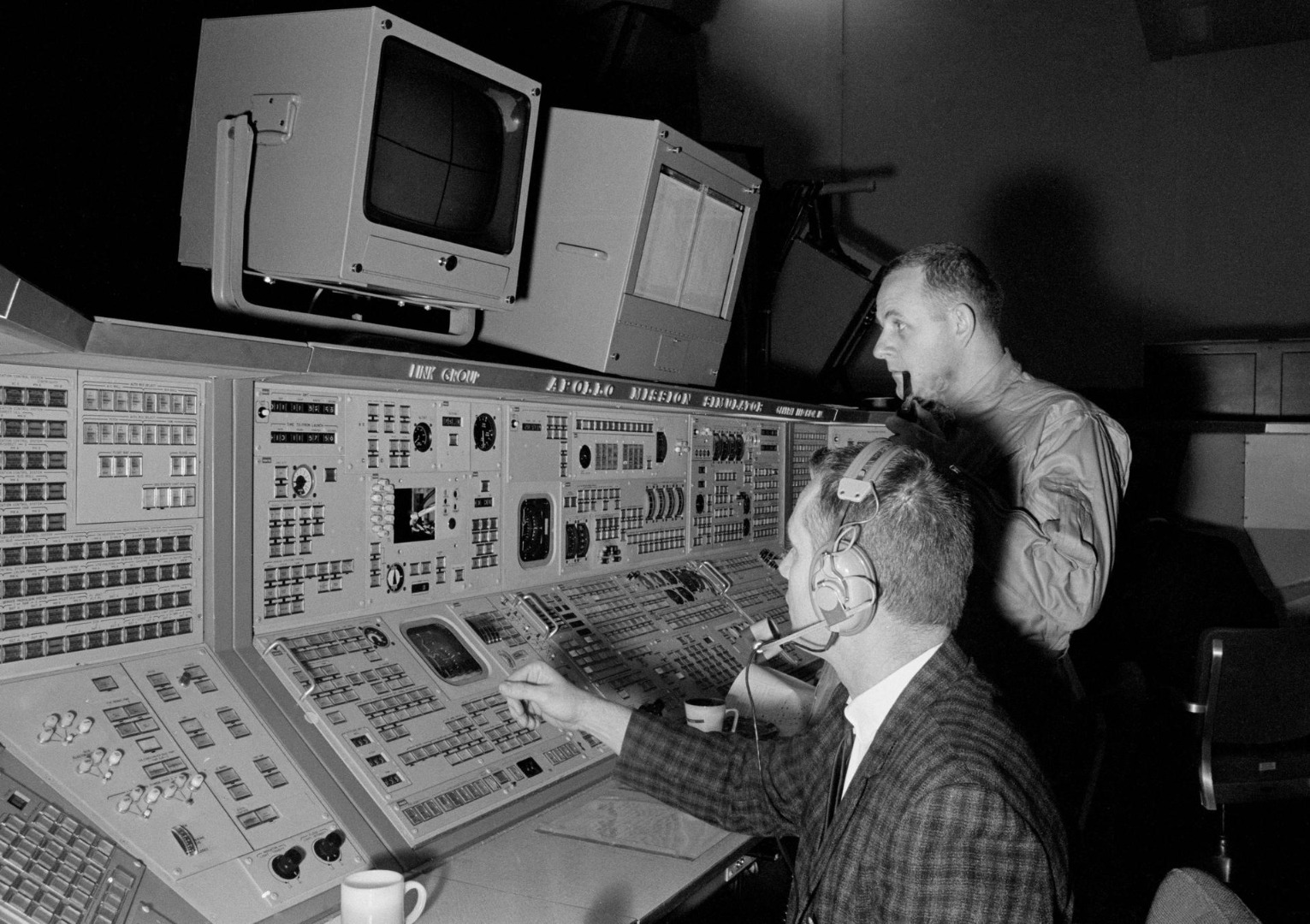
View of Astronaut Dr. Philip K. Chapman training at the Apollo Mission Simulator at NASA MSC. 1968 NASA photo
Chapman was also frustrated by the lack of focus on fundamental science in his role as Apollo 14’s mission scientist. However, he did leave his indelible imprint upon the Apollo lunar program, suggesting one of Apollo 15’s most famous, memorable experiments:
I recall commenting to [Apollo 15 support crew member and CAPCOM] Joe Allen that the Moon would be a great place to repeat Galileo’s famous demonstration at the Leaning Tower of Pisa, because the objects would fall slowly, and in vacuum. If I had thought about it seriously, I would have suggested it to Al Shepard on Apollo 14 – but perhaps he would have preferred his demonstration of golf on the Moon.
Joe thought about how to implement the idea and suggested it to Dave Scott, who liked it (possibly to upstage Shepard). He improved it by obtaining a falcon feather from the mascot of the Air Force Academy (even though he graduated from West Point, because the Academy was only established in 1953).
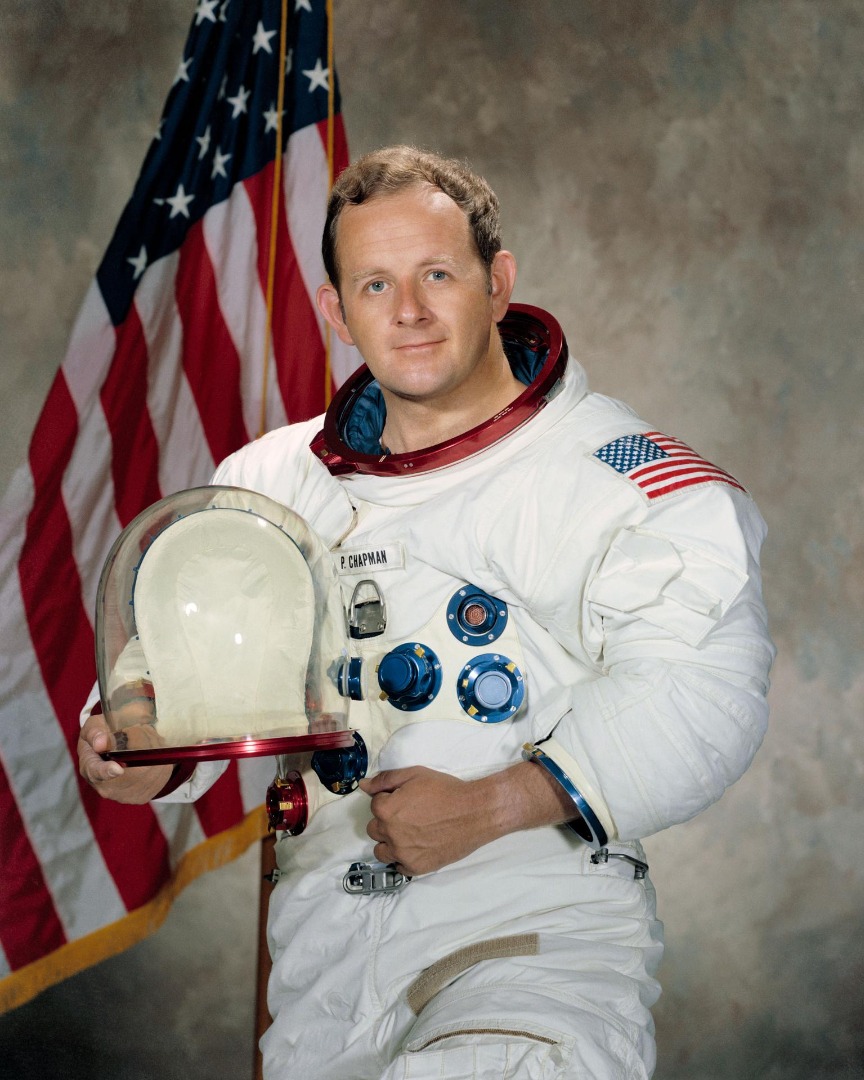
1971 NASA portrait
As they say, the rest was history. By this point, Chapman was devising experiments with his alma mater MIT for Skylab B, which was to be Skylab’s successor. But this wasn’t meant to be; Skylab B was canceled in 1972 to free up funds for the Space Shuttle, which was beginning to be developed. Sensing he wouldn’t fly in space perhaps for well over another decade and disappointed by the cancellation of his program, Chapman resigned his NASA post. In the book Shattered Dreams by space historian Colin Burgess, Chapman remained magnanimous about not reaching space during his years at NASA and was not embittered by his experiences: “I have enjoyed an adventurous, rewarding life. I am of course sorry I didn’t get into space, but that experience would have been just one more trinket on my string of memories.”
After leaving NASA, Chapman set to work at the Avco Everett Research Laboratory in Massachusetts, working on laser propulsion. During the mid-1970s, he became the president of the L5 Society, one of the first space advocacy groups centered around the space settlement ideas of Dr. Gerard K. O’Neill, which evolved to be today’s National Space Society. Always the futurist, he envisioned off-world communities: “We can build arks for societies of humans to go on multi-generational missions.” Chapman did not neglect near-term, Earth-based issues. He developed engineering solutions, social policy proposals, and campaigned for funds for clean energy by working with the inventor of the Solar Power Satellite, Peter Glaser. Chapman was a champion of space-based solar power for the rest of his life. Chapman’s proudest contribution was in documenting the feasibility of the Strategic Defense Initiative, which was a pivotal element in ending the Cold War.
Contact us for more information or to receive launch updates
In recent years, Chapman was chief scientist for the rocket startup Rotary Rocket Company, was chair of the Solar High Study Group, enjoyed writing, and perhaps owing to his marked modesty, stayed away from the autograph and public appearances circuit. While Chapman kept a low profile during his lifetime, his death on April 5th, 2021 marked the end of an era, as he remained an influential space visionary. Former NASA colleague and Skylab 4 astronaut Ed Gibson remarked, “Although I wish Phil had flown, with his knowledge and enthusiasm, he made meaningful contributions in his own way!”
Shattered Dreams underscored how Chapman’s presence as the first Australian-born astronaut paved the way for other Aussies in spaceflight; for example, oceanographer Dr. Paul Scully-Power launched into space aboard Challenger in 1984, and Australian-born Andy Thomas would prove to be a frequent flier during the Shuttle years. Within the last decade, Australia has even established a space agency, giving the Southern continent a more prominent international profile; Australia has notably never had a shortage of “space geeks,” and many of them are active in a plethora of social media groups dedicated to spaceflight.
However, Chapman’s story didn’t end with his passing. Some of his ashes will be flown on Celestis Memorial Spaceflights’ suborbital Aurora Flight, scheduled to launch on November 30th, 2022, from Spaceport America near Las Cruces, New Mexico. In addition, he will be on Celestis’ first Voyager Service, the Enterprise Flight, which will carry human ashes, DNA, and data, becoming the first outpost of humanity beyond the Earth-Moon system.
As an Antarctic explorer, scientist, pilot, astronaut, and pioneer of space development, Dr. Philip Chapman’s life left resonances, even though his career trajectory didn’t resemble those such as Glenn and Armstrong. Soon, he will realize his life’s dream to voyage into space with Celestis Memorial Spaceflights.
*****
Author’s note: Some of the text and biographical information for this article has been excerpted from these three pieces written about Chapman in 2020 by the author, which included interviews:
First Aussie: Dr. Philip Chapman, Apollo’s Astronaut from “Down Under,” Part One
First Aussie: Dr. Philip Chapman, Apollo’s Astronaut from “Down Under,” Part Two
First Aussie: Dr. Philip Chapman, Apollo’s Astronaut from “Down Under,” Part Three
Further Reading
To Boldly Go: Nichelle Nichols’ 90th Celebrated With Unveiling of Foundation
When Star Trek's Nichelle Nichols died in late July at age 89, she was lauded as the trailblazer she was during her lifetime. However, her story is far from over. In early 2023, she will fly alongside the DNA of her son, Kyle Johnson, aboard Celestis’ Enterprise Flight. In addition, the Nichelle Nichols Foundation – announced today, on what would have been her 90th birthday – will continue to promote diversity in STEM fields.
By Celestis on 12/28/2022Why I Am Sending a Celestis MindFile™ to Deep Space
Why did Celestis' Director of Content, Emily Carney, purchase her own Celestis MindFile™? The answer is not as apparent as it might seem.
By Emily Carney on 11/25/2022


